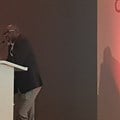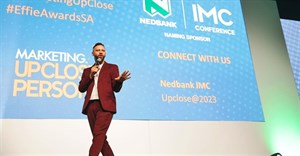Trending




 Does anyone know what content is any more?Justine Drake
Does anyone know what content is any more?Justine Drake
Elections 2024
Jobs
- Rights and Entertainment Lawyer Johannesburg
#NedbankIMC2020: Advanced TV, what you need to know to work it [Part 1]

To understand, Surtee said we had to go back to 1989. She said one of her first memories of her addiction to television is MacGyver, featuring Richard Dean Anderson. MacGyver was a secret agent who used inventive and non-violent solutions to resolve crimes and always saved the world from baddies. She said that the point was that she made an appointment to watch her favourite television show. She said she had to schedule her life around this favourite TV show. She also said that some of us would also remember having a VCR (video cassette recorder) at home. We used it to tape all our shows manually and then you watched it over the weekend. But how times have changed...
The evolution of TV
Since then TV has definitely evolved. How viewers watched has changed. TV fits into their lives and not the other way around. This obviously excluded live sporting events, news and big reality-type shows, which are conducive to live linear television viewing. Like watching the president's speech last week. You want to catch that sort of thing live.
She said that the smart TV market is definitely booming and over-the-top platforms like Netflix and Showmax are really becoming the norm. Even payTV broadcast platforms are embracing this space, offering connected TV services, like Catch Up or transactional TV and demand services like Box Office.
Surtee said: "This space is bound to become far more interesting as more players will start entering the market. The glow-up of these over-the-top (OTT) services globally still continues. However, there seems to be a move from what we call subscription video-on-demand services to what we call advertising-funded video and demand services.
She also said that you see these in the recent launches of globally of the likes of Peacock, which is the AVOD (ad-based video-on-demand) service out of NBCUniversal Studios or Hulu, which launched two additional products to their SVOD (subscription video on demand) - one that is a hybrid, which uses a subscription model that Surtee explains was created to help consumers with the cost and that the model also has a reduced ad load.
Her conclusion: there are some consumers who will just never want to pay for content. This is the reality of it all, she said. But what does this mean for the future of television? From these streaming sites to new advertising models in an industry that is constantly in a state of flux, where change is happening at a faster rate than any other time in history.
As a key takeout, she said:
As change gives rise to competition, it puts the control firmly into viewers' hands. This constant change in the television industry proves one thing, you definitely cannot rely on the present market position. One has to continuously try to adapt business models in order to appeal to the customer of the future.Her lockdown takeout aligns with this when she says:
You really just got to be agile and have an organisational culture that helps you to drive this kind of change because winning businesses are those that offer the best customer experiences.Lines between TV and digital are blurring
"For you as marketers, television has always been the best platform to build your brands but in this new, connected world you are adding digital engagement to the biggest screen in your home. Now everyone is confused. Confused about uniformity in video metrics, for when a piece of video is viewed on a laptop versus when it's viewed on a mobile phone or when it's viewed on a television. How do you measure that?"
She said globally there is no solution yet for essential metric. So media agencies are trying to adopt a video stacking solution and adding screen measurements separately in order to get to what they call a total video audience.
Surtee said below slide really highlights why there is no uniformity in metrics:
![#NedbankIMC2020: Advanced TV, what you need to know to work it [Part 1]](https://biz-file.com/c/2007/568476.png)
She says that the TV measurement standard says that it was watched by 1.5 million people only on the SuperSport channel so maybe the bigger the screen, the better the reach or maybe she joked, size really does matter. To be continued...
Bizcommunity attended the Nedbank IMC 2020 live stream. Follow @IMCConf @IMCConference #NedbankIMC2020 #MarketingWorks for some standout insights.















